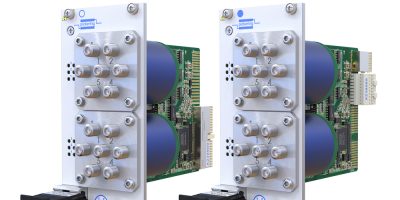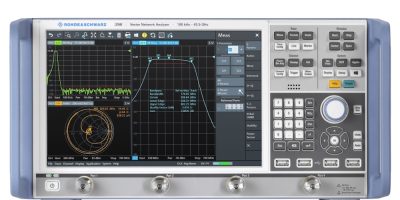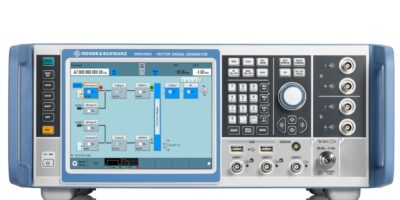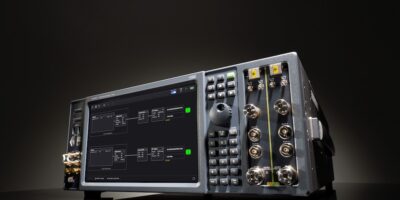Pickering Interfaces has augmented its 4x-785C range of SP4T and SP6T microwave multiplexers with the addition of 67GHz terminated SP4T/SP6T modules to support the latest requirements of the 5G and semiconductor test sectors.
The 40-785C (PXI) and 42-785C (PXIe) modules feature internal relay terminations that can improve signal integrity. Devices feature panel and remote mount options that enable users to locate the switches at the most convenient location for their application; remote mount options occupy a single chassis slot but can control up to three switches, saving space.
The 4x-785C family is based on Radiall mechanical microwave switches. The addition of 67GHz 50 Ohms internally terminated switches allows unused channels of a test system to be terminated in the characteristic impedance of the signal path, maximising signal integrity.
Remote mount options connect each switch to the control module via a 1.5m cable to provide flexibility in switch positioning. This reduces the length of RF connections, maximising performance and minimising cabling costs. The chassis slot count is minimised as only three slots are required for a single configuration – or six slots for dual panel mount switch – or just a single slot for the remote mount versions.
Steve Edwards, switching product manager at Pickering Interfaces, said: “To aid with test system health monitoring, the 4x-785C family is provided with a switch cycle counting feature. Determining the number of operations per channel can help manage the wear-out process by allowing alternate lower usage paths to be substituted for high use channels.”
Pickering also offers interconnection cables to support RF applications, and its standard three-year warranty covers all modules.
Pickering Interfaces designs and manufactures modular signal switching and simulation for use in electronic test and verification. It claims to offer the largest range of switching and simulation products in the industry for PXI, LXI, and PCI applications. It also provides cables and connectors, diagnostic test tools, and application software and software drivers to support these products. The company operates and serves all electronics industries, including automotive, aerospace and defence, energy, industrial, communications, medical and semiconductor.
The 4x-785C range of SP4T and SP6T microwave multiplexers will debut at International Microwave Symposium (IMS), (19 to 24 June) at the Colorado Convention Center, Denver, Colorado, at booth 11006.







